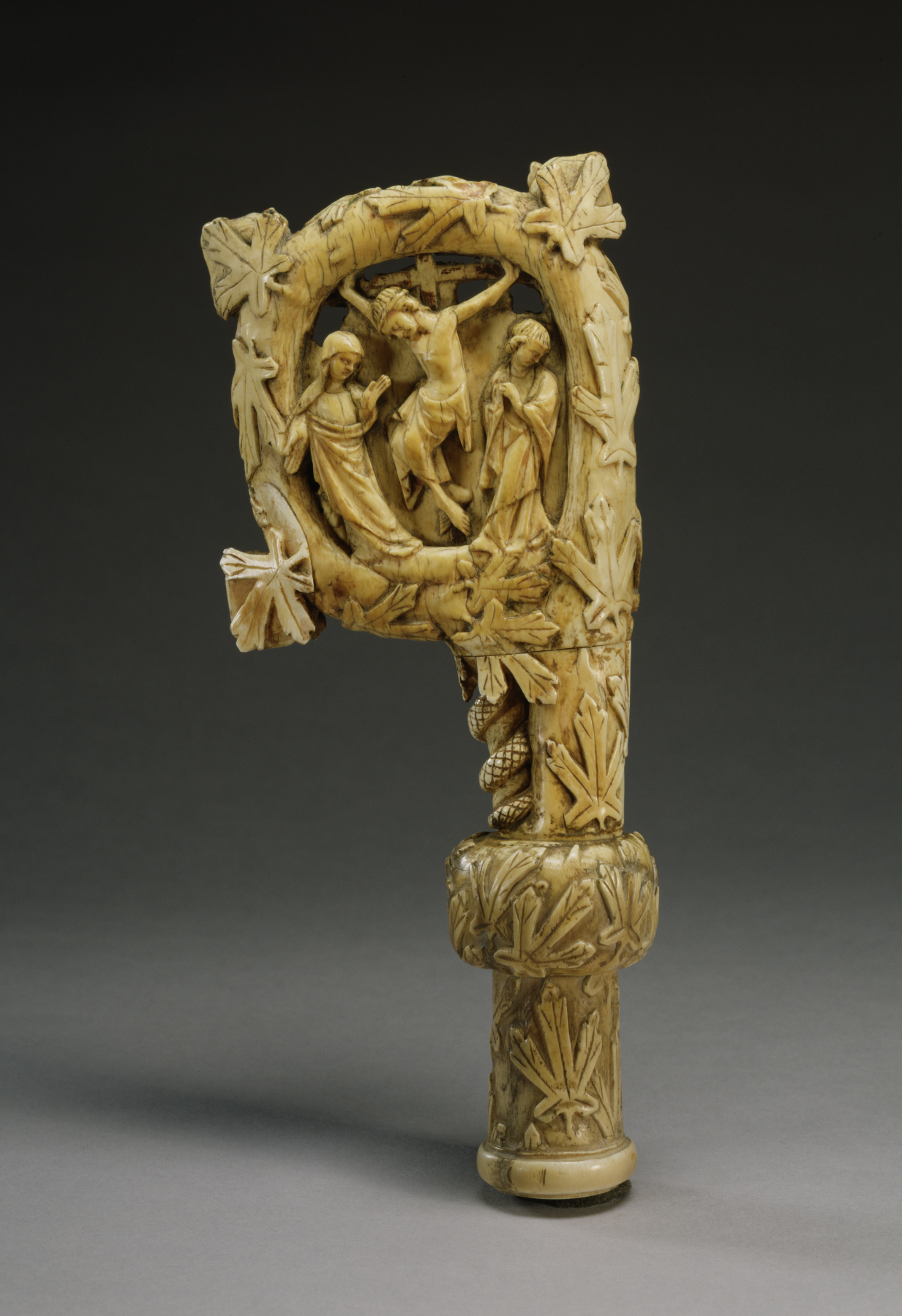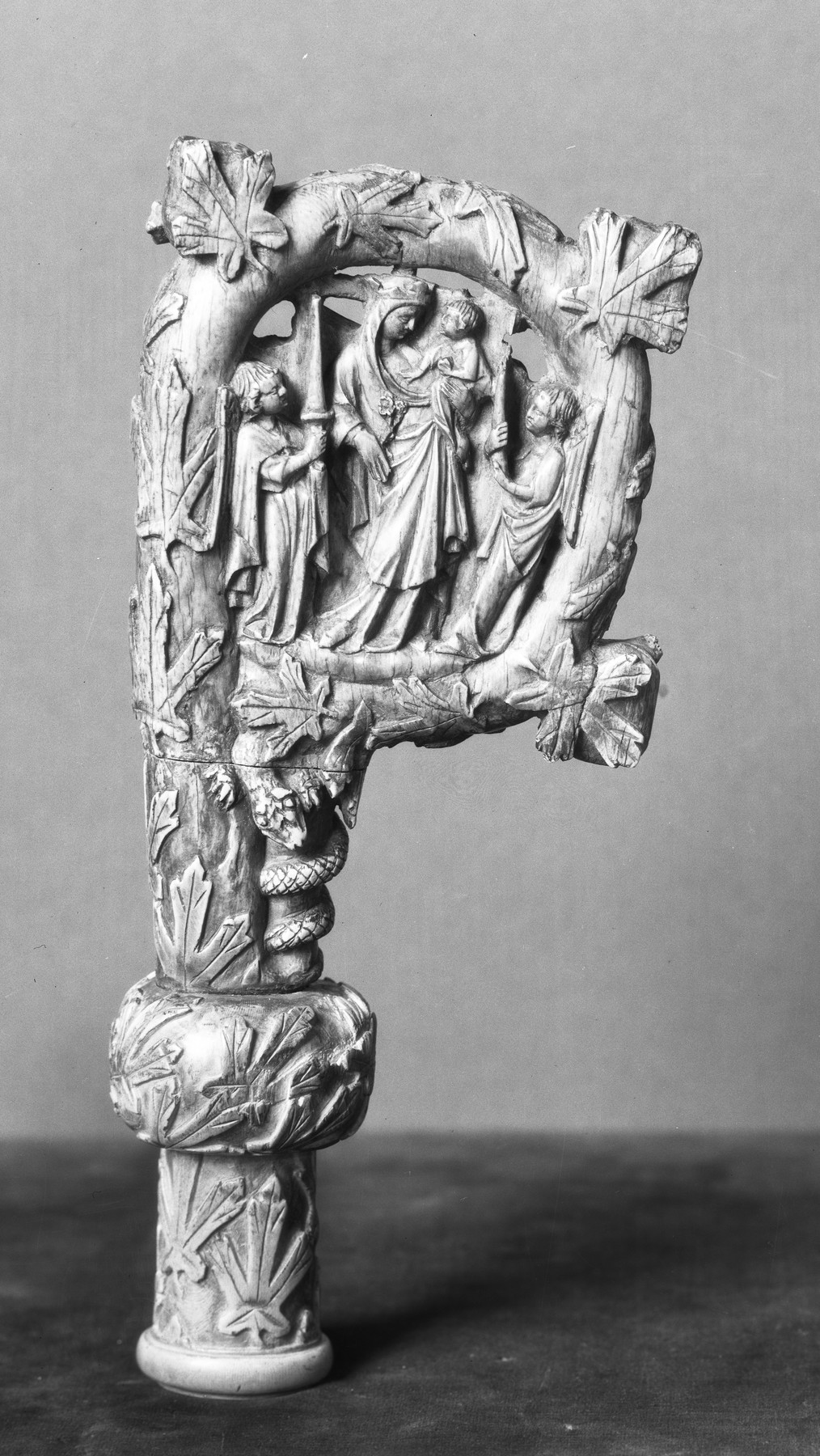Virgin and Child, Crucifixion
(Medieval Europe )
Croziers, the staffs carried by bishops and abbots, are meant to identify them symbolically as shepherds of the Christian flock (actual shepherds use wooden sticks with a similar hook to catch straying sheep). Unusually, this crozier has two complementary images on its two sides. On one side, the infant Christ is held by his mother, who also carries a lily signifying by its whiteness her purity. On the other, the adult Jesus hangs upon the cross; the snake underneath alludes to Adam's and Eve's original sin, redeemed through Jesus' death. The base of the crozier was added ca. 1900.
Provenance
Provenance (from the French provenir, 'to come from/forth') is the chronology of the ownership, custody, or location of a historical object. Learn more about provenance at the Walters.
Frédéric Spitzer, Paris, by purchase; Sale, Paul Chevallier and Charles Mannheim, April 17, 1893, no. 92; Henry Walters, 1923, by purchase; Walters Art Museum, 1931, by bequest.
Exhibitions
| 2008-2009 | Realms of Faith: Medieval and Byzantine Art from the Walters Art Museum. Museum of Biblical Art, New York; Colby College Museum of Art, Waterville; Joslyn Art Museum, Omaha. |
| 2002-2005 | Realms of Faith: Medieval and Byzantine Art from the Walters Art Museum. Frist Center for the Visual Arts, Nashville. |
| 2001-2002 | Realms of Faith: Medieval and Byzantine Art from the Walters Art Museum. Frist Center for the Visual Arts, Nashville. |
Geographies
France, Paris (Place of Origin)
Measurements
9 7/16 x 4 7/16 in. (24 x 11.3 cm)
Credit Line
Acquired by Henry Walters, 1923
Location in Museum
Not on view
Accession Number
In libraries, galleries, museums, and archives, an accession number is a unique identifier assigned to each object in the collection.
In libraries, galleries, museums, and archives, an accession number is a unique identifier assigned to each object in the collection.
71.232






